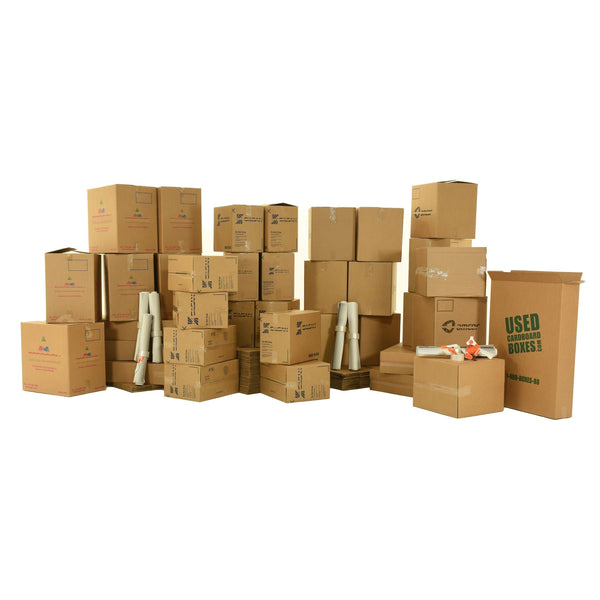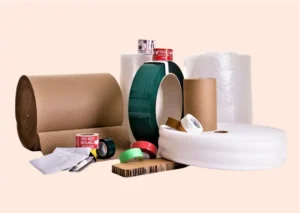Table of Contents
- 1 What is the best packaging for electronics?
- 2 Packaging Strategies to Avoid Damages During Shipping
- 3 Selecting the Right Packaging Based on Shipping Conditions
- 4 Emerging Trends in Electronic Packaging Materials
- 5 How to Ensure Ultimate Safety for Your Devices
- 6 Frequently Asked Questions (FAQ)
- 7 Author

Article-at-a-Glance
-
Electronic packaging materials are vital for the protection and durability of devices.
-
Key properties include shock absorption, EMI shielding, anti-static features, and thermal management.
-
Customizable solutions such as thermoformed plastics and foam inserts ensure a secure fit for any device.
-
Sustainable packaging options are available without compromising on protection.
-
Choosing the right packaging material depends on the specific needs of the electronic components being shipped.
Understanding the Role of Packaging in Electronics Safety
When it comes to keeping electronics safe, the right packaging isn’t just important, it’s essential. Think of it like a helmet for your devices; it’s the first line of defense against a world that’s full of potential electronic hazards. Whether it’s a bumpy ride in a delivery truck or the static zap from a wool sweater, the correct packaging materials can mean the difference between a device arriving in perfect condition or ending up as an expensive paperweight.
Essential Properties of Packaging Materials for Durability
So, what makes packaging materials ‘good’? They need to be tough enough to take a hit, like a boxer’s gloves. They should also keep static away, like rubber-soled shoes on a carpet. And they must manage heat, like a good sunscreen. Let’s break it down:
-
Shock Absorption: Materials that cushion devices from drops and knocks.
-
EMI Shielding: Materials that block out harmful electromagnetic interference.
-
Anti-Static Features: Materials that prevent the buildup of static electricity.
-
Thermal Management: Materials that help maintain a stable temperature.
Factors Influencing Electronic Packaging Material Choices
Choosing packaging materials is like picking out a new outfit for your gadget. You wouldn’t wear a swimsuit in a snowstorm, right? Likewise, you wouldn’t pack a heat-sensitive device without insulation. The factors that steer this choice include the device’s sensitivity to static, its value, and where it’s going. If it’s traveling through the Sahara, you’ll need something that can handle the heat. If it’s a bumpy ride, you’ll want padding. And if it’s pricey, you’ll need all the bells and whistles of security.
What is the best packaging for electronics?
Now, you might be wondering, ‘What’s the best suit of armor for my electronics?’ Well, it’s not a one-size-fits-all answer. Different devices need different protection. Let’s explore some top contenders.
Metal Shielding Cases for Ultimate EMI Protection
For devices that are sensitive to electromagnetic interference (EMI), a metal shielding case is like a fortress. It’s the heavy-duty option for gadgets that need to stay calm and collected in a storm of EMI. These cases are the knights in shining armor for high-end electronics.
Anti-Static Bags and Materials for ESD Sensitive Devices
If your device fears static like a cat fears water, anti-static bags are your go-to. They’re like raincoats for electronics, keeping the static shock at bay and ensuring your device stays dry and functional.
Thermoformed Plastics: Custom Fit for Device Security
For a glove-like fit, thermoformed plastics mold to your device’s every curve, hugging it tightly and keeping it safe. It’s like a custom-tailored suit, but for your smartphone or tablet.
Biodegradable Alternatives for Sustainable Packaging
And let’s not forget, being kind to the planet is just as important as being kind to your devices. Biodegradable packaging is the green choice, offering protection without the guilt of harming the environment. It’s like eating a delicious meal that’s also good for you.
Foam Inserts and Enclosures for Shock Absorption
Last but not least, foam inserts are like airbags for your electronics. They take the hit so your devices don’t have to, cushioning them from the rough and tumble of shipping and handling.

Packaging Strategies to Avoid Damages During Shipping
Shipping can be a rough journey for electronics. They’re jostled and tossed, with every bump in the road a potential disaster. That’s why it’s crucial to have a strategy in place for their protection. Here’s what you need to know to keep your devices safe in transit.
Best Practices for Secure Electronic Packing
First things first, let’s talk about best practices. These are the golden rules of packing electronics:
-
Always use a box that’s slightly larger than the product to allow for padding.
-
Use anti-static bubble wrap for an initial layer of protection.
-
Fill any empty spaces with foam or air cushions to prevent movement inside the box.
-
Seal the box with heavy-duty tape to keep everything snug and secure.
By following these steps, you’re setting up a solid foundation for safe shipping.
Multi-Layer Packaging for Enhanced Protection
But sometimes, you need to go the extra mile. That’s where multi-layer packaging comes in. It’s like an onion, with each layer providing an additional barrier against the outside world. Here’s how to layer up:
-
Start with an anti-static bag to prevent ESD damage.
-
Next, add a layer of bubble wrap for cushioning.
-
Follow that with a layer of corrugated cardboard for structure.
-
Finally, place it all in a sturdy outer box for the final defense.
This multi-layer approach is especially useful for high-value or fragile electronics.
Customizing Packaging for Unique Electronic Shapes and Sizes
Electronics come in all shapes and sizes, and sometimes off-the-shelf packaging solutions just won’t cut it. Custom packaging is like a bespoke suit; it’s made to measure and fits perfectly. It provides the best protection because it’s designed specifically for your product’s unique dimensions and contours.
Selecting the Right Packaging Based on Shipping Conditions
The route your package takes can be full of surprises. Extreme temperatures, humidity, and even the risk of water exposure can wreak havoc on electronics. Therefore, selecting packaging that can withstand these conditions is paramount.
Assessing Temperature and Humidity Levels for Safe Transporting
When your electronics are traveling through different climates, insulation becomes key. You need materials that can keep the cold out and the heat at bay. Look for packaging that offers thermal protection, like insulated foam or reflective liners.
Impact-Resistant Choices for Rough Handling Scenarios
Let’s face it, packages aren’t always handled with care. For those inevitable rough moments, you’ll want impact-resistant materials. Hard shell cases and sturdy corner protectors can absorb shocks and prevent crushing forces from damaging your goods.
Most importantly, don’t forget to label your package as ‘Fragile’ or ‘Handle with Care’ to encourage gentler handling.
Waterproof Solutions for Liquids and Moisture Exposure
Moisture is the silent killer of electronics. A waterproof or water-resistant packaging solution is like an umbrella for your devices. Consider using plastic seals or moisture barrier bags to keep your electronics dry, no matter the weather.

Emerging Trends in Electronic Packaging Materials
The world of electronic packaging materials is always evolving, with new innovations popping up to meet the ever-increasing demands for safety, security, and sustainability. Here’s a look at what’s on the horizon.
Innovations in Material Science for Longer Shelf-Life
Scientists are working on new materials that not only protect electronics during shipping but also extend their shelf life. These materials are designed to shield sensitive components from environmental factors that can degrade them over time.
Smart Packaging: Integrating Technology for Security
Imagine a package that tells you where it is and how it’s doing. That’s the promise of smart packaging. With embedded sensors and connectivity, smart packaging can alert you to potential issues like temperature spikes or unauthorized opening.
Eco-Friendly Advances in Electronic Packaging Industry
And let’s not forget about Mother Nature. The push for eco-friendly packaging has led to the development of materials that are not only biodegradable but also provide top-notch protection. It’s a win-win for the environment and your electronics.
How to Ensure Ultimate Safety for Your Devices
Ensuring the ultimate safety of your devices boils down to choosing the right packaging materials and strategies. Here’s a quick recap:
-
Go for multi-layer packaging for the best protection.
-
Customize packaging to fit the unique needs of your device.
-
Consider the shipping conditions and choose materials accordingly.
-
Stay informed about emerging trends to leverage the latest in packaging technology.
And remember, if you’re ever in doubt about how to protect your valuable electronics, don’t hesitate to Contact Us. We’re here to guide you to the perfect packaging solutions.
When it comes to electronics, ensuring their safety is paramount. Whether you’re a manufacturer shipping out a large order, or an individual sending a phone to a friend, the packaging you choose is the guardian of your gadgets. Here’s how to make sure your devices reach their destination unscathed.
Most importantly, never skimp on quality. Opting for cheaper materials might save costs upfront, but the potential damage to your devices could lead to greater losses in the long run. Invest in packaging that promises durability and is well-suited for your device’s specific needs.
Custom-Engineered Solutions for High-Value Electronics
High-value electronics require special attention. Custom-engineered solutions offer a perfect fit and tailored protection, ensuring that your items are held securely in place, minimizing the risk of damage. This might include custom foam inserts or specially designed boxes that conform exactly to the shape of your device.
Testing Protocols for Material Durability and Effectiveness
It’s not enough to just choose high-quality materials; you must also ensure they can stand up to the test. Implementing rigorous testing protocols for durability and effectiveness is crucial. This could mean drop tests, compression tests, and even temperature tests to simulate various shipping scenarios and ensure the packaging can withstand them.
Contact Us for Expert Guidance in Electronics Packaging
If you’re unsure about the best packaging materials for your electronic devices, or if you need a custom solution, we’re here to help. Our expertise in electronic packaging ensures that your devices are protected with the most innovative and secure materials available. For expert guidance, don’t hesitate to Contact Us.

Frequently Asked Questions (FAQ)
You’ve got questions, we’ve got answers. Here’s a quick rundown of some common queries about electronic packaging materials.
What materials are typically used for electronic packaging?
Typical materials for electronic packaging include anti-static bags, corrugated cardboard boxes, foam inserts, bubble wrap, and metal shielding cases. The choice depends on the specific needs of the device, such as sensitivity to static electricity or susceptibility to physical damage.
How does packaging impact the shelf life of electronic components?
Packaging plays a critical role in extending the shelf life of electronic components. Proper packaging protects against environmental factors like moisture, dust, and temperature fluctuations that can degrade components over time. Choosing the right materials can significantly reduce the risk of premature failure.
For example, using desiccants within packaging can help control humidity levels, while anti-static materials prevent damage from electrostatic discharge.
Additionally, well-designed packaging can prevent mechanical stress during storage and handling, further preserving the integrity and functionality of electronic components.
-
Desiccants control moisture.
-
Anti-static materials prevent electrostatic discharge.
-
Sturdy construction reduces mechanical stress.
Can electronic packaging be both durable and environmentally friendly?
Yes, it’s definitely possible to have electronic packaging that is both durable and environmentally friendly. Innovations in materials science have led to the development of biodegradable and recyclable materials that offer excellent protection. For instance, molded pulp and plant-based plastics provide robust packaging options while being sustainable.
What are some common challenges in electronic packaging?
Common challenges include ensuring protection against electrostatic discharge (ESD), providing sufficient cushioning to absorb impacts, and creating packaging that can withstand various environmental stresses. Furthermore, balancing cost with quality and environmental considerations can also pose a challenge.
How do anti-static materials prevent damage to electronics?
Anti-static materials work by dissipating electrical charges, rather than allowing them to build up and discharge suddenly, which can damage sensitive electronic components. These materials are essential for protecting devices during transportation and storage, particularly in dry environments where static electricity is more likely to occur.
Table of Anti-Static Materials
Below is a concise table outlining various anti-static materials used in different applications:
|
Material |
Description |
Price |
|---|---|---|
|
Conductive Wood Particle Board with Carbon Inclusions |
Used for conductive material production, with surface resistance of 10^5 – 10^9 Ω |
– |
|
High Pressure Plastic |
Durable, impact-resistant, high temperature/chemicals/solvents resistant, surface resistance of 10^5 – 10^9 Ω |
– |
|
Elastomer |
Common material for ESD grounding mats |
$37.22 |
|
Fiberboard |
Material used in ESD grounding mats |
– |
|
Foam Rubber |
Used in ESD grounding mats for its properties |
– |
|
Laminate |
Material found in ESD grounding mats |
– |
|
Rubber |
Offers excellent resistance to oil, grease, and most common solvents, with surface resistance < 1.0×10^9 ohms |
– |
|
Vinyl |
Available in anti-static workstation mats, offering various color and surface options |
Starting at $9.26 |
These materials serve different purposes in creating anti-static environments, ensuring the safety of sensitive equipment and components by preventing electrostatic discharge.
Remember, the safety of your electronic devices during shipping is in your hands. Choosing the right packaging materials is the first step towards ensuring they arrive in the same condition they left. And if you’re ever in doubt, we’re just a click away to assist you with your packaging needs.



